WAYNE — After twice digging down with his excavator through grass and topsoil only to find clay mixed with sand, Mark Birtwell hit the good stuff. Clean, pure, blueish clay suitable for making earthenware pottery, cold and shimmering with wetness.
The easily malleable clay announced itself with a slurping sound when the excavator dipped into it, bringing relief to what had been, until then, an increasingly nervous Molly Saunders as she watched with about 20 friends, family and other onlookers, including fellow potter Jon Lamarche, who apprenticed under Molly.
Saunders lives at the Main Street property with the now dug-up back lawn with her husband, Steve, where she with son Sam runs Wayne Village Pottery. She anticipated Saturday digging up about 40 tons of Maine blue clay, which turns a red brick color when it is fired, enough to keep them and Lamarche elbow-deep in clay to make ornaments and pottery, including mugs and bowls, for another five to 10 years or so.
“That’s it, that’s what we’re after, right there,” Molly Saunders said. “I’m happy to see it, I’ll tell you.”
They last dug up clay on the site about 10 years ago, and Saturday was the fifth time they dug for clay there since 1978, two years after Molly and Steve bought the brick home with a wooden barn.
They hoped to get about five dump-truck loads of clay Saturday and planned to store it, wrapped in plastic, out back for use as needed. Users will include Molly Saunders, though she said she’s trying to retire and doesn’t make as much pottery as she used to; Sam Saunders, who sells ornaments wholesale; and Lamarche, who with his wife, Gina Brigham Lamarche, owns a gift shop and cafe just up the street from Wayne Village Pottery at the Old Firehouse Farm at 519 Main St. where the pottery he and the Saunders make is for sale retail.
The Saunders have used clay from the same underground cache to make ornaments and pottery for 31 years. Molly Saunders said just about every Maine town once had a potter to provide local residents with plates and other items, and that pottery, as well as bricks, were made from local clay. She and Lamarche said very few potters use Maine clay now, instead just buying clay at art supply stores.
“It is hard, but it’s worth it to us to get our own stuff,” she said. “I love that it’s my clay, and I’m using my own resources. I hope more people realize it can be done.”
About a year after the Saunders bought their home in 1976, Edith Swift, the former owner, told them bricks for the red brick house had been made from clay pulled from the back field of the property.
She asked around and learned there had been a potter in Wayne, and bricks, likely including those used in the home, had also been made locally.
Curious about the clay she’d heard was in the backyard, she talked to an excavator at the local general store one day, who said his excavator was right in town, and he’d come look for it. She later came home to find him already digging. He dug down and found clay, pulling out a big pile of it.
She said the discovery was life-changing for her.
Back then Molly Saunders had done some pottery as a hobby, but with the ready source behind her home, she decided to get more into it. She said she experimented for about a year, working to find a non-lead glaze that worked with the redware pottery. Eventually she made the former hobby into a business, Wayne Village Pottery.
Clay formed in Maine as the glaciers melted thousands of years ago, depositing sand and clay. It is generally found about seven feet down, Lamarche said.
“We’re looking down into time,” Molly Saunders said as she and others looked down into the newly dug hole.
The hole, or in this case, three holes, will be filled back in after the clay has been extracted. Saunders said this was the only time they’ve had to dig multiple holes to find quality clay.
Once it is removed from the ground, the clay needs to have air removed from it, either by hand-kneading or with a pugmill, before it can be turned into pottery.
Lamarche, who said he’ll likely work for the Saunders in exchange for him getting a share of the clay, said he loves working with the locally-sourced clay.
“A lot of potters don’t realize you can use local materials,” he said. ” I like the appeal of using this. It motivated me to become a production potter and make a lot of stuff.”
Birtwell continued digging despite a heavy rainstorm with high winds and thunder and lightning ripping through the area Saturday afternoon. Onlookers sought shelter under canopies until the storm moved out and sun returned.
When “the good stuff” was unearthed, Molly Saunders and Lamarche headed right for it, showing onlookers how different it was than the layered sand and clay mix above it. Several children who watched the dig grabbed handfuls of the freshly dug clay, quickly becoming covered in it.
Saunders said they usually find clay all the way down to bedrock, roughly 18 to 20 feet down.
Keith Edwards — 621-5647
Twitter: @kedwardskj
Send questions/comments to the editors.


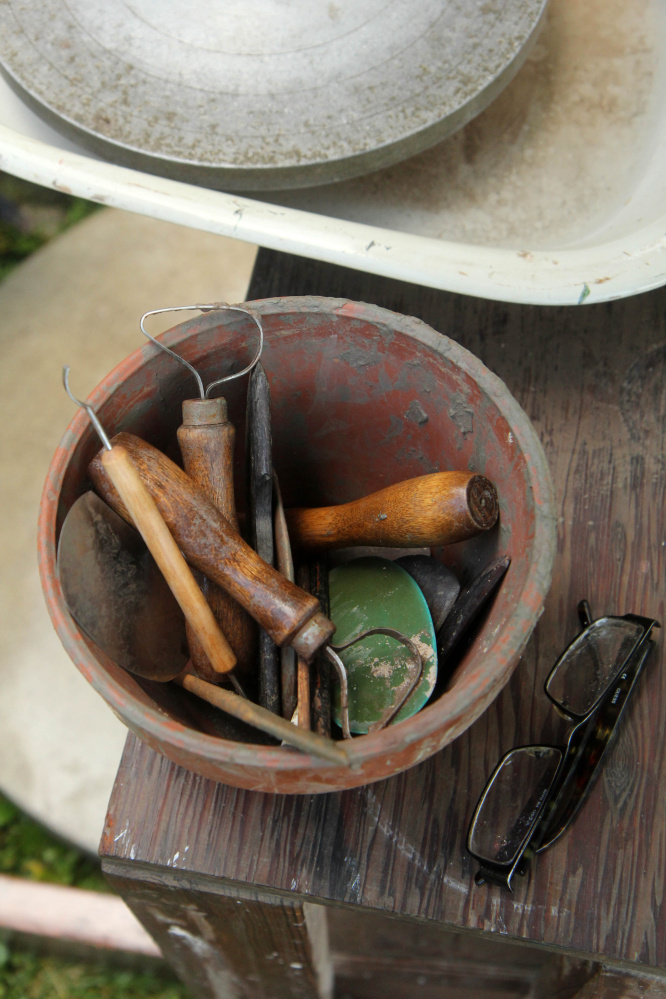
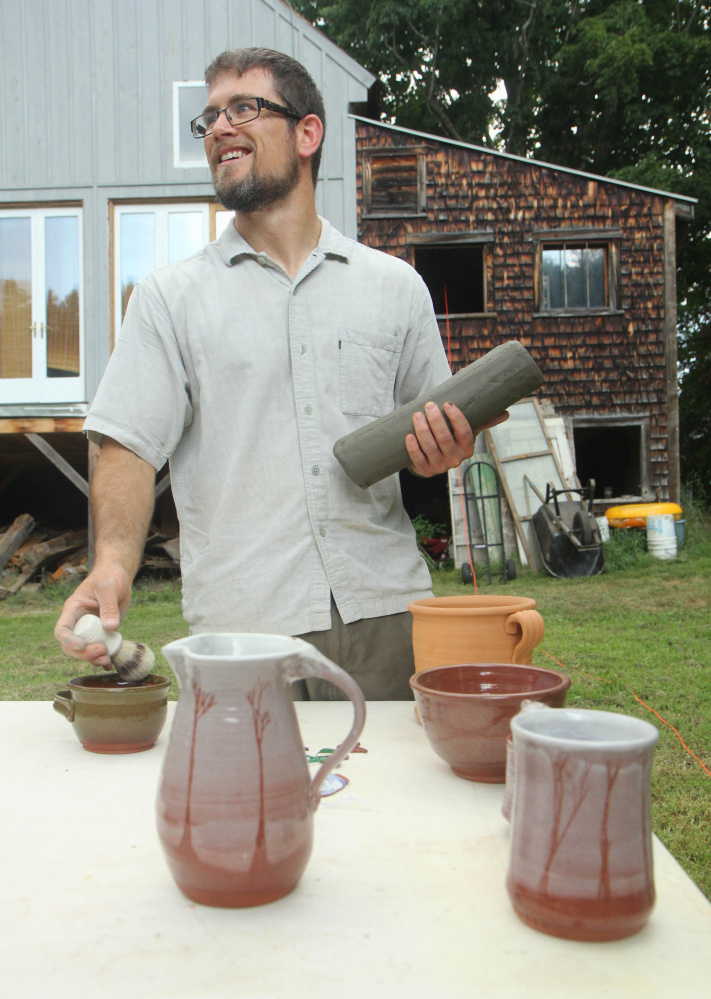
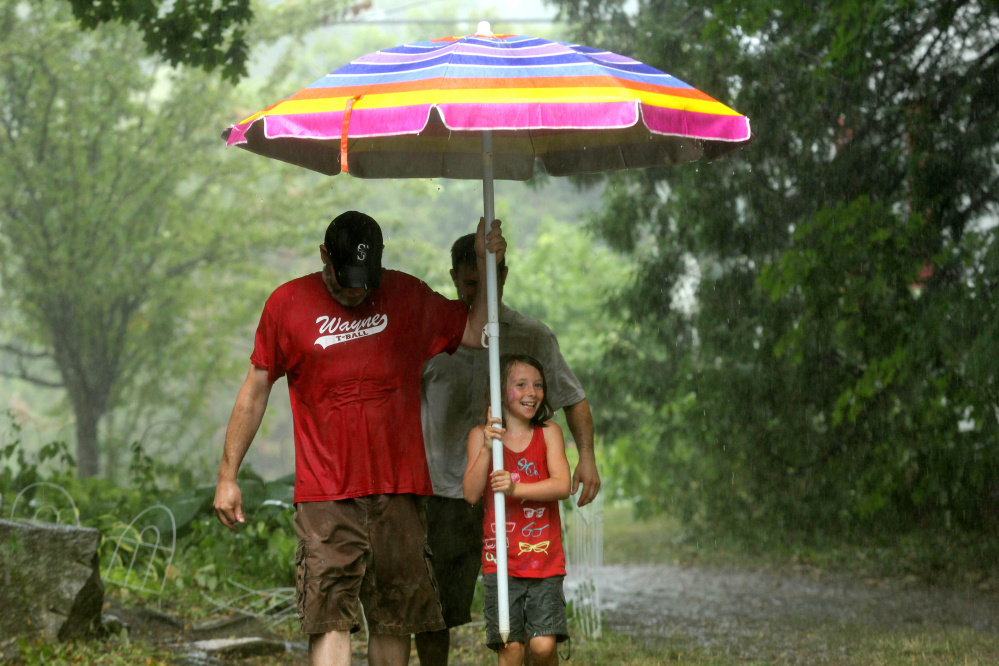
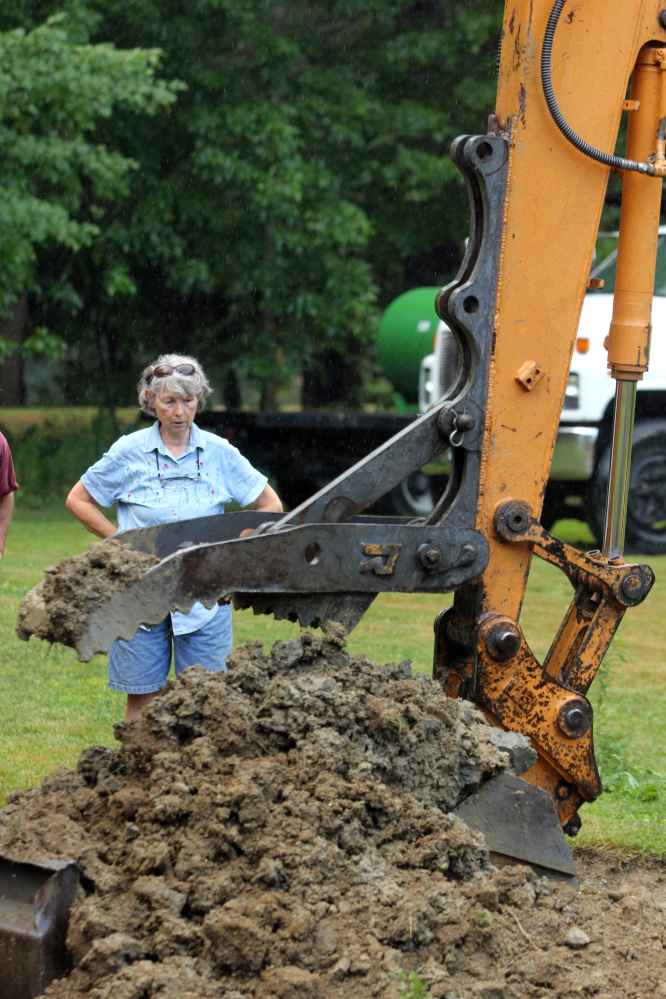
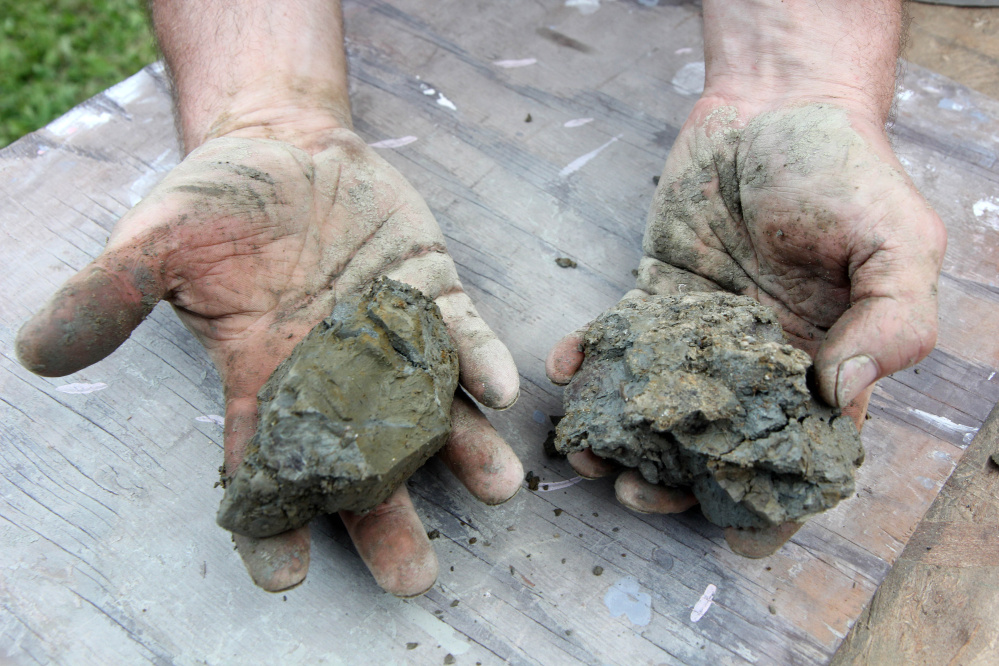
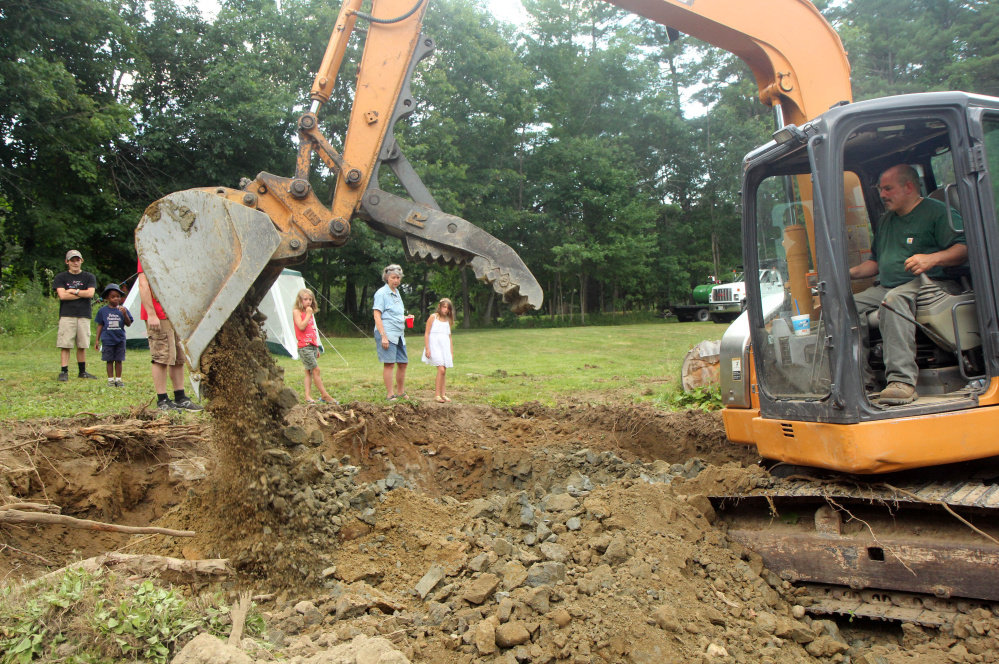
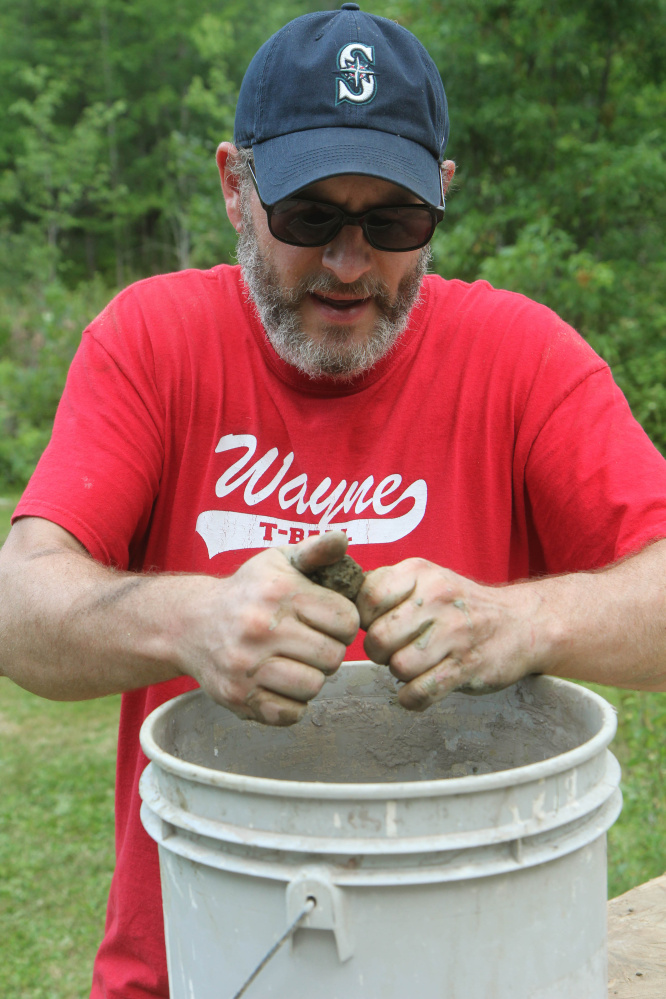


Comments are no longer available on this story